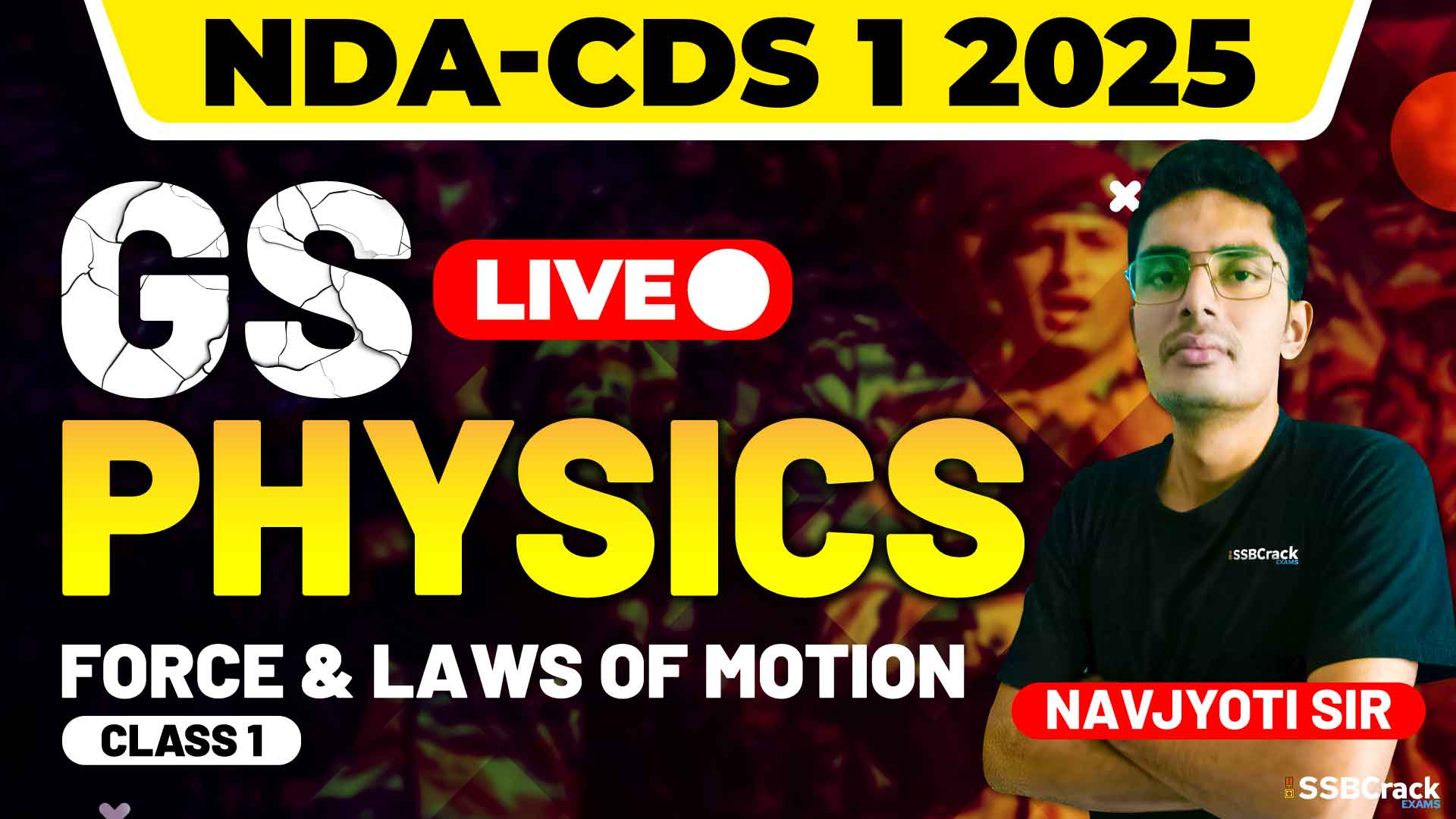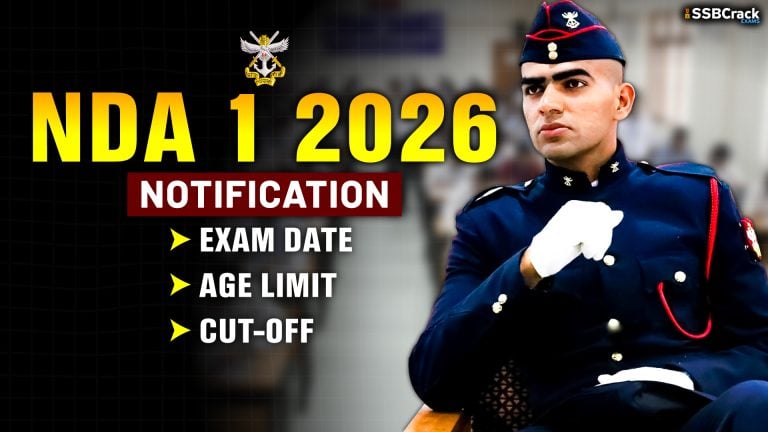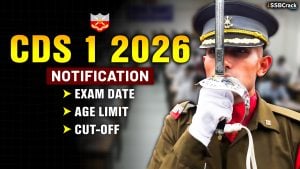Physics is a core subject in competitive exams like the National Defence Academy and Naval Academy (NDA-NA) Paper II (GAT) and the Combined Defence Services (CDS) Exam. Among the fundamental topics, Laws of Motion stand out for their applicability in understanding various phenomena in everyday life and their prominence in the exams. A recent class focused on delving deep into the subtopics of this essential chapter, providing both theoretical understanding and practical insights for solving exam-related problems.
Highlights of the Class
The class covered the following key subtopics under the Laws of Motion:
- Inertia
- Explained as the tendency of an object to resist a change in its state of motion or rest.
- Real-life examples such as passengers in a moving vehicle helped students connect with the concept.
- Momentum
- Discussed as a measure of the motion of a body, dependent on its mass and velocity.
- Emphasis was placed on understanding its conservation and its role in collisions.
- Force and Impulse
- Force was introduced as the external agency responsible for changing the state of motion of a body.
- The concept of impulse, as the product of force and the time it acts, was clarified with practical examples.
- Newton’s Three Laws of Motion
- First Law (Law of Inertia): The principle of objects maintaining their state of rest or uniform motion unless acted upon by an external force was explored.
- Second Law: This law, connecting force with mass and acceleration, was linked to practical problems in various domains.
- Third Law: The famous “action and reaction are equal and opposite” principle was highlighted through relatable situations like walking or rowing a boat.
- Conservation of Momentum
- The principle that the total momentum of an isolated system remains constant was explained using examples like rockets and collisions.
- Other Forces
- Tension: Practical scenarios like strings and cables in lifts were used to discuss tension.
- Weight: The gravitational force acting on a body was defined and distinguished from mass.
- Normal Reaction: The force exerted by a surface perpendicular to the object in contact was elaborated on with illustrations.
- Friction
- The resistive force between two surfaces in contact was explained.
- Types of friction (static, kinetic, and rolling) and ways to reduce friction were discussed.
Structure of the Class
The class was structured to enhance conceptual clarity and problem-solving skills:
1. Conceptual Discussion
Each subtopic was explained with real-life examples to provide a strong theoretical foundation. Analogies and visual aids were used to make the concepts more relatable.
2. Interactive Questioning
Students were encouraged to ask questions and participate in discussions, which helped clarify doubts and fostered active learning.
Strategies for Preparing the Topic
To excel in the Laws of Motion section, a systematic and disciplined approach is essential. Here are some tips for effective preparation:
1. Understand the Basics
- Focus on grasping the fundamental definitions and principles of inertia, momentum, and force.
- Use real-world examples to internalize these concepts, making them easier to recall during exams.
2. Study Newton’s Laws in Detail
- Each law has a wide range of applications. Understand its implications and practice problems related to it.
- Pay attention to scenarios involving multiple forces acting on a body.
3. Learn Through Visualization
- Use diagrams, flowcharts, and graphs to visualize forces and motion.
- For friction and tension problems, draw free-body diagrams to identify and resolve forces.
4. Practice Conservation of Momentum
- Solve problems on collisions and other scenarios where momentum plays a key role.
- Understand how this principle applies to systems like rockets or vehicles.
5. Focus on Friction
- Learn the characteristics of different types of friction and their practical implications.
- Practice questions on friction to understand its effects on motion in various situations.
6. Attempt Previous Years’ Questions
- Solve MCQs from past NDA-NA and CDS exams to familiarize yourself with question patterns and difficulty levels.
- Analyze the solutions to understand the reasoning behind correct answers.
7. Revise Regularly
- Summarize each subtopic in concise notes for quick revision before the exam.
- Highlight important concepts and exceptions for easy recall.
8. Practice Time Management
- Solve problems under timed conditions to improve speed and accuracy.
- Learn to allocate time wisely between theory-based and numerical questions.
9. Clarify Doubts
- Seek help from teachers or peers whenever you encounter difficulties in understanding a concept or solving a problem.
Conclusion
The recent class on Laws of Motion provided students with a comprehensive understanding of this fundamental physics topic. By blending theoretical discussions with practical problem-solving, it helped bridge the gap between learning and application.
For aspirants of the NDA-NA and CDS exams, mastering the Laws of Motion is an essential step towards success. With consistent practice, a clear grasp of concepts, and a strategic approach to preparation, this topic can become a significant strength in the physics section. Remember, understanding the principles behind motion not only prepares you for exams but also equips you to appreciate the fascinating mechanics of the world around you.



















